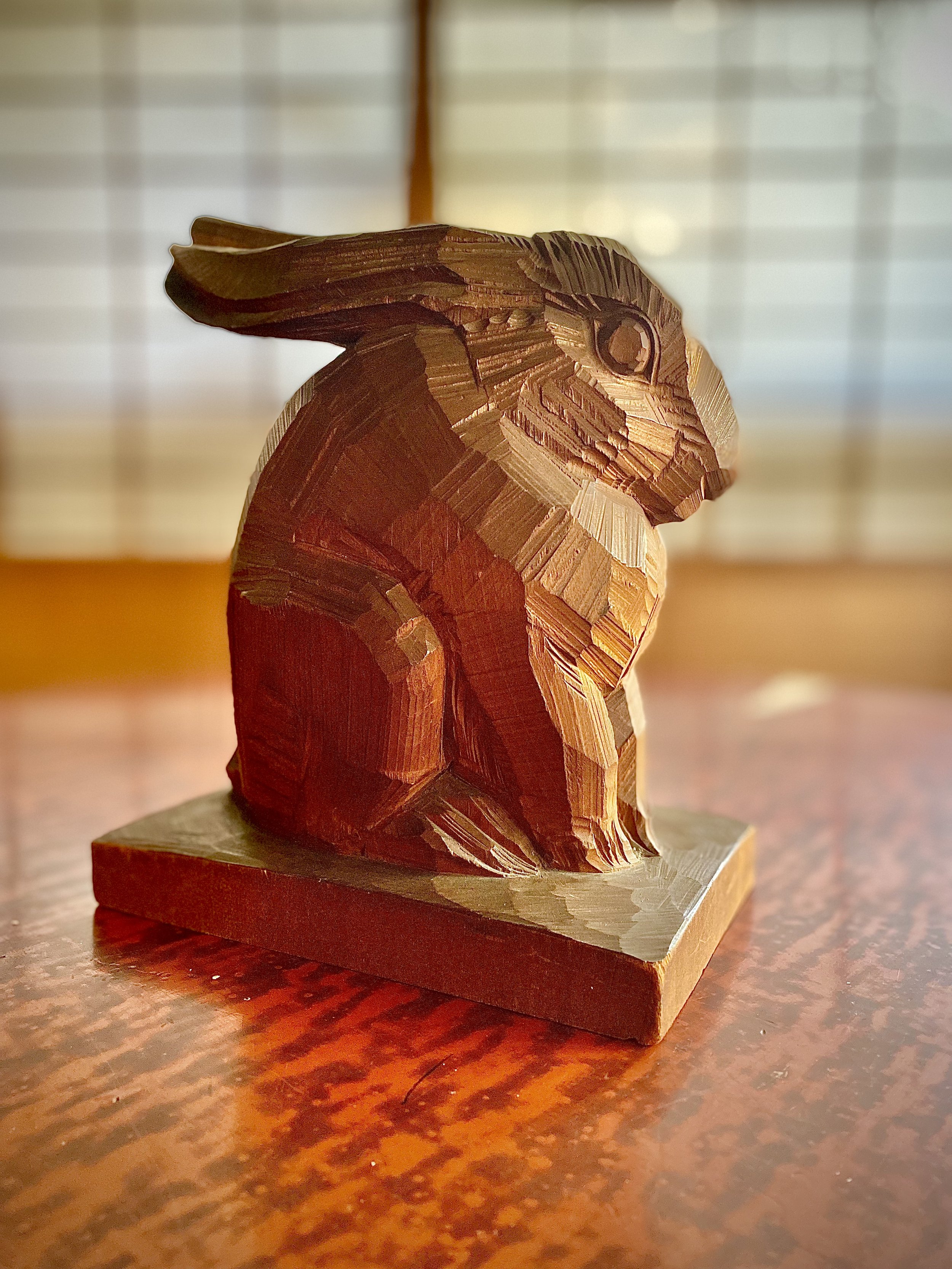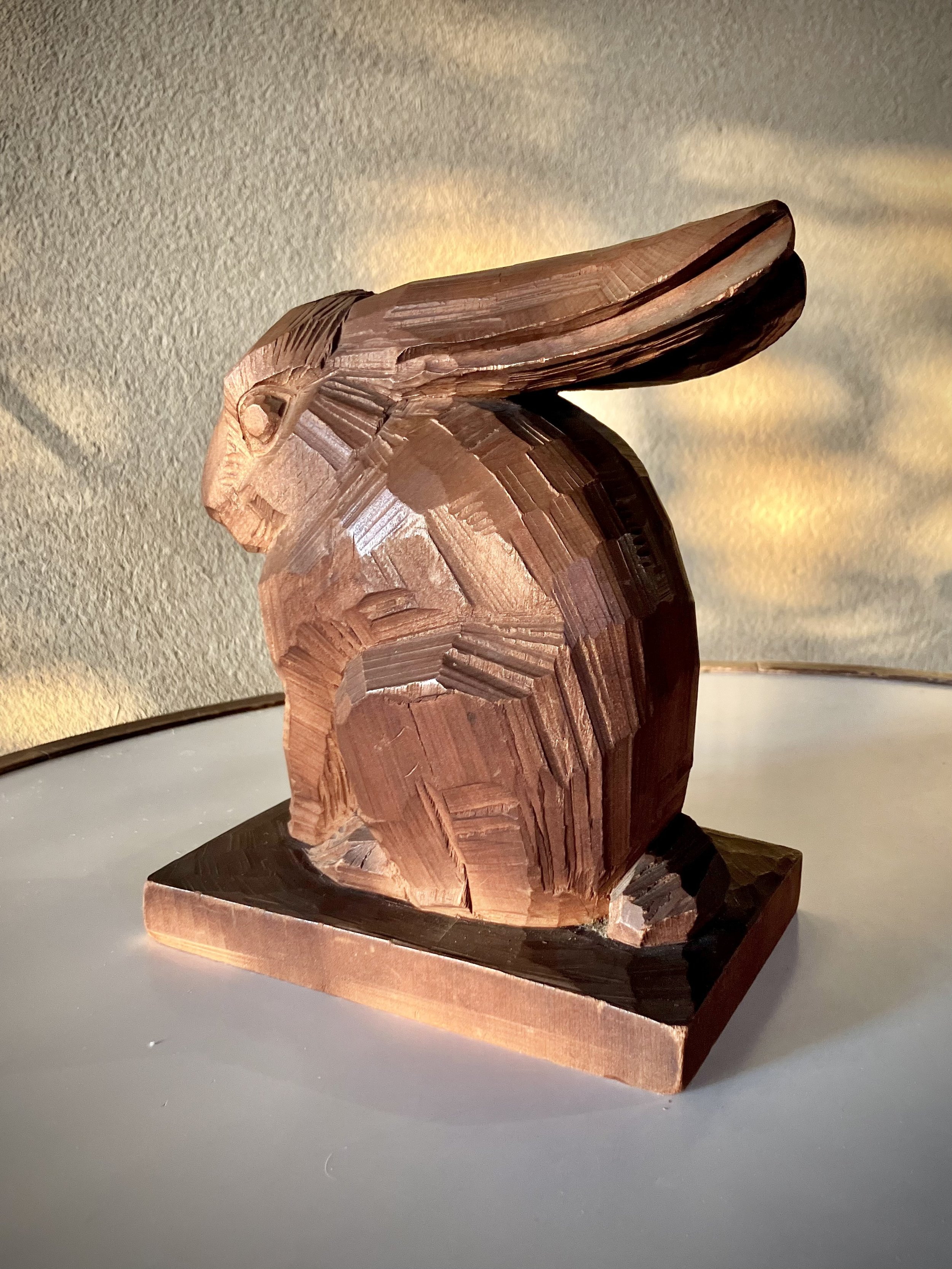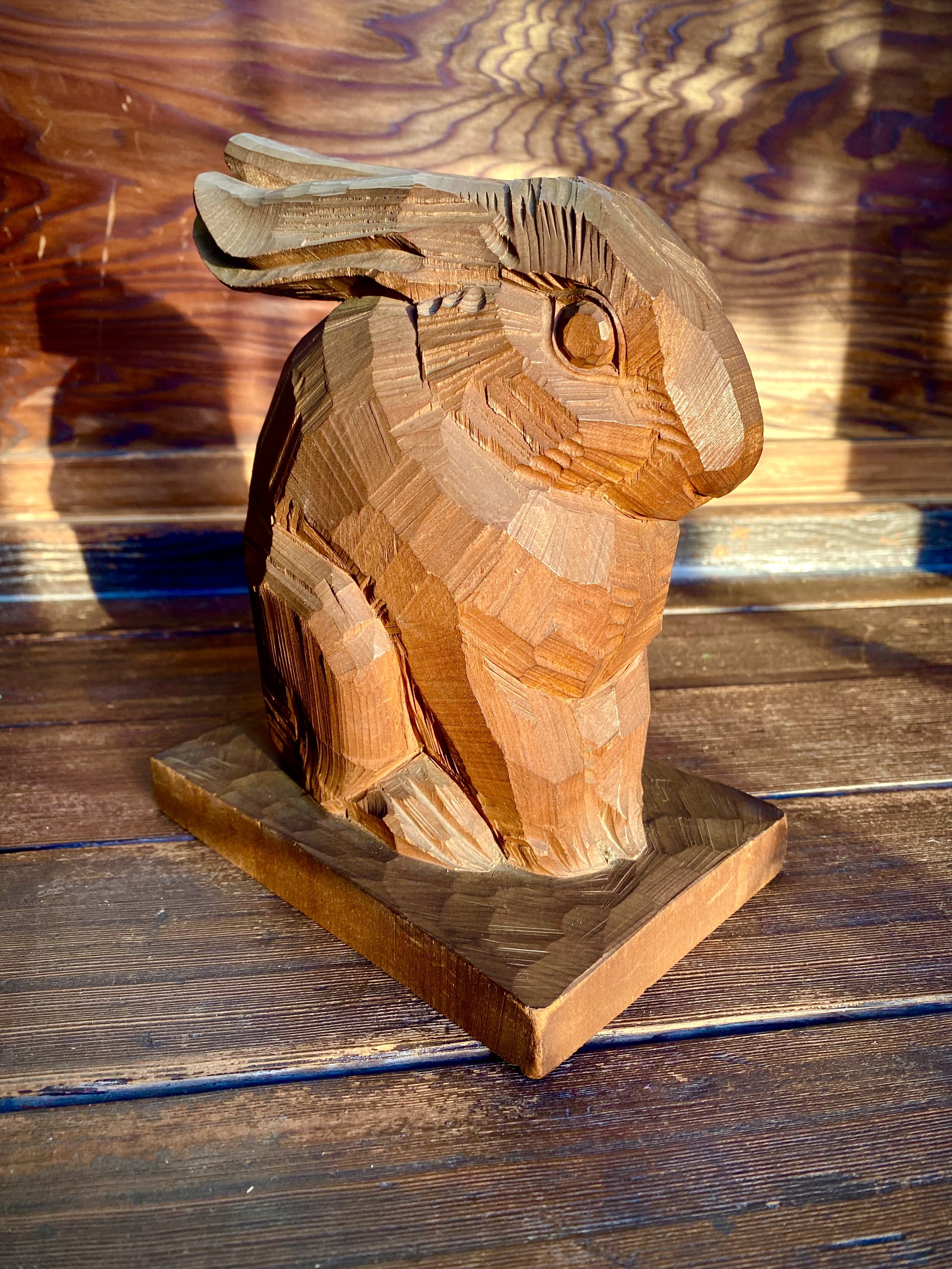 Image 1 of 3
Image 1 of 3

 Image 2 of 3
Image 2 of 3

 Image 3 of 3
Image 3 of 3




Rabbit Handsome and Brave
A wonderful, life-size, rustic wooden rabbit (with preturnaturally-long ears!) from the late 19th to early 20th century (Meiji Period). It is carved from some kind of lustrous wood that looks like California redwood, but is probably some kind of Japanese cedar. The chop on the bottom says “Wood Mind.” Any woodworker can understand that state of being.
In Japan, the rabbit (usagi,うさぎ) symbolizes good luck, prosperity, longevity — and fecundity, of course! Families seeking to have children often make offerings to at Shinto shrines devoted to the rabbit kami. The rabbit is also seen as an avatar of devotion and self-sacrifice, as in the following story, from the Konjaku Monogatarishuu, a collection of Buddhist parables written during the Heian period (794–1185).
It seems that, once upon a time, Monkey, Fox and Rabbit devoted themselves to seeking enlightenment. They believed that their current incarnations were the result of having behaved badly in their past lives, and they wanted to do better in the next.
The diety Tai-shaku-ten (aka Indra) was very moved by the animals’ piety. Manifesting as an old man, he offered the animals a chance to do good, by helping to feed him. Fox and Monkey went out foraging, and returned with a bounty of food. But Rabbit was unable to find anything!
Ashamed, Rabbit leapt into the old man’s fire, offering himself for sustenance. Tai-shaku-ten was so impressed by Rabbit’s self-sacrifice that he set the likeness of Rabbit on the face of the moon, where you can still see it today.
A wonderful, life-size, rustic wooden rabbit (with preturnaturally-long ears!) from the late 19th to early 20th century (Meiji Period). It is carved from some kind of lustrous wood that looks like California redwood, but is probably some kind of Japanese cedar. The chop on the bottom says “Wood Mind.” Any woodworker can understand that state of being.
In Japan, the rabbit (usagi,うさぎ) symbolizes good luck, prosperity, longevity — and fecundity, of course! Families seeking to have children often make offerings to at Shinto shrines devoted to the rabbit kami. The rabbit is also seen as an avatar of devotion and self-sacrifice, as in the following story, from the Konjaku Monogatarishuu, a collection of Buddhist parables written during the Heian period (794–1185).
It seems that, once upon a time, Monkey, Fox and Rabbit devoted themselves to seeking enlightenment. They believed that their current incarnations were the result of having behaved badly in their past lives, and they wanted to do better in the next.
The diety Tai-shaku-ten (aka Indra) was very moved by the animals’ piety. Manifesting as an old man, he offered the animals a chance to do good, by helping to feed him. Fox and Monkey went out foraging, and returned with a bounty of food. But Rabbit was unable to find anything!
Ashamed, Rabbit leapt into the old man’s fire, offering himself for sustenance. Tai-shaku-ten was so impressed by Rabbit’s self-sacrifice that he set the likeness of Rabbit on the face of the moon, where you can still see it today.